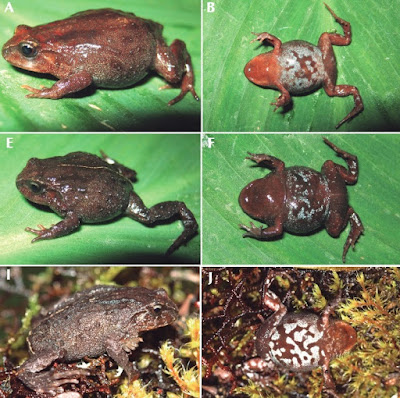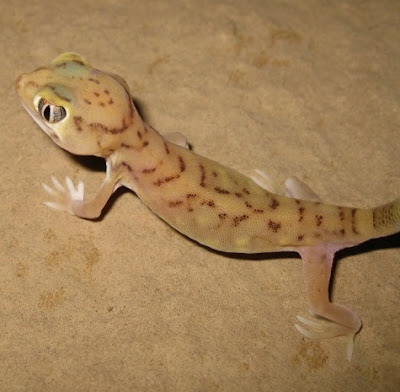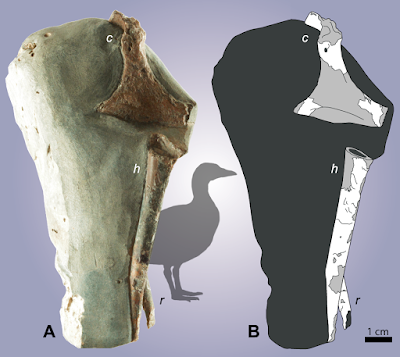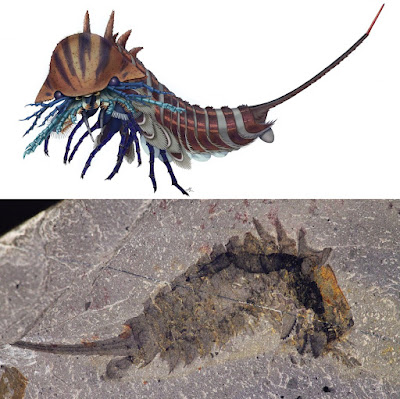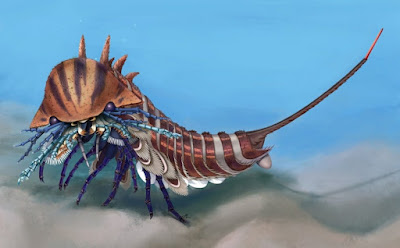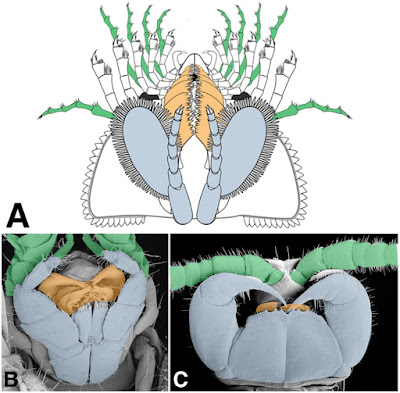[Most Recent Entries] [Calendar View]
Thursday, December 28th, 2017
| Time | Event | ||||
| 6:03a | [Herpetology • 2017] Bryophryne mancoinca • A New Species of Bryophryne (Anura: Strabomantidae) from the Cordillera de Vilcabamba, southeastern Peruvian Andes
Abstract We describe a new species of Bryophryne from the Cordillera de Vilcabamba in Department Cusco, in the southeastern Peruvian Andes. The new species differs from all other congeneric taxa, except B. flammiventris and B. gymnotis, by possessing a weakly defined tympanic membrane and tympanic annulus, by the presence of vocal sac and vocal slits in males, and by producing advertisement calls. The new species is distinguished from B. flammiventris and B. gymnotis by skin texture, presence of small, oblique dentigerous processes on the vomer, ventral coloration ranging from bluish-gray to whitish-gray with irregular or reticulate dark brown spots, and call composed of two or three notes. The new species is further characterized by having dorsal skin shagreen with tubercles, discontinuous dorsolateral folds, skin smooth on ventral surfaces of the body, and lateral fringes on fingers and toes. This species was found at the transition from montane forest to high Andean puna, where it occurs in moist microhabitats under moss and rocks at elevations from 3519 to 3707 m a.s.l. Keywords: amphibians, Brachycephaloidea, Choquequirao Archeological Complex, humid grassland, Terrarana Bryophryne mancoinca sp. nov. Etymology: The specific epithet refers to the most important Inca of Vilcabamba, Manco Inca, who was the leader of the last Incan resistance in southeastern Peru. Luis Mamani, Alessandro Catenazzi, Alex Ttito, Sergio Mallqui and Juan C. Chaparro. 2017. A New Species of Bryophryne (Anura: Strabomantidae) from the Cordillera de Vilcabamba, southeastern Peruvian Andes. Phyllomedusa. 16(2); 129-141. DOI: 10.11606/issn.2316-9079.v16i2p129-141 | ||||
| 7:28a | [Herpetology • 2017] Teratoscincus sistanense • A New Species of Frog-eyed Gecko, Genus Teratoscincus Strauch, 1863 (Squamata: Sphaerodactylidae), from southeastern Iran
Abstract Herein we describe a new species of Teratoscincus Strauch, 1863 from remote desert areas of the Sistan and Baluchistan Province in southeastern Iran. Based on morphological characters, this species, Teratoscincus sistanense sp. n., has a close relationship with T. microlepis and is distinct from all other members of its genus by the number of small scales around the midbody. We provide information about the ecology, biology and conservation of this new species. A comparison with the other three Iranian species of Teratoscincus and an updated key to this genus in Iran are presented. Keywords: Sistan and Baluchistan province, morphology, identification key
Teratoscincus sistanense Etymology. The specific epithet is a patronym for Sistan and Baluchistan Province, southeastern Iran. Habitat. Teratoscincus sistanense inhabits flat terrain with a hot and dry climate. The soil texture of the habitat is sandy, with various degrees of compaction, ..... The species was observed to be active only at night. Several species of lizards (Teratoscincus bedriagai, Ophiomorous tridactylus, Eremias persica, Trapelus agilis, Eremias fasciata) and snakes (Echis carinatus and Lytorhynchus ridgewayi) occur sympatrically or syntopically with T. sistanense sp. n. Distribution. Teratoscincus sistanense sp. n. is known only from the type and paratype localities in Zabol County, Sistan and Baluchistan Province, southeastern Iran. Morteza Akbarpour, Soheila Shafiei, Mohammad Ebrahim Sehhatisabet and Ehsan Damadi. 2017. A New Species of Frog-eyed Gecko, Genus Teratoscincus Strauch, 1863 (Squamata: Sphaerodactylidae), from southeastern Iran. Zoology in the Middle East. 63(4); 296-302. DOI: 10.1080/09397140.2017.1388490 | ||||
| 10:54a | [PaleoOrnithology • 2017] Maaqwi cascadensis • A Large, Marine Diving Bird (Avialae: Ornithurae) from the Upper Cretaceous of British Columbia, Canada Abstract Mesozoic bird fossils from the Pacific Coast of North America are rare, but small numbers are known from the Late Cretaceous aged sediments of Hornby Island, British Columbia. Most are unassociated fragments that offer little information, but additional preparation of a large coracoid has revealed more details of its structure, as well as three associated wing bones. Phylogenetic analysis suggests that Maaqwi cascadensis, gen. et sp. nov. represents a derived crown or near-crown member of Ornithurae, and specifically suggests affinities with Vegaviidae. M. cascadensis is characterized by large size, and regressions based on dimensions of the coracoid suggest a large bird, with an estimated body mass of approximately 1.5 kilograms. The bones are robust, with thick walls, suggesting that M. cascadensis was a bird adapted for diving, similar to modern loons and grebes. The wings are short, while the coracoid is unusually short and broad, similar to modern loons. Along with the Ichthyornithes and Hesperornithes, M. cascadensis and Vegaviidae appear to represent a third clade of bird that evolved to exploit marine habitats in the Late Cretaceous, one specialized for foot-propelled diving and rapid cruising flight over water. Systematic paleontology Avialae Gauthier 1986 Ornithothoraces Chiappe and Calvo 1994 Ornithuromorpha Chiappe and Walker 2002 Ornithurae Haeckel 1866 sensu Chiappe Vegaviidae Agnolín et al. 2017 Maaqwi cascadensis gen. et sp. nov. Etymology: The generic name, Maaqwi, is derived from “ma’aqwi”, the Coast Salish word meaning “water bird”. The specific name, cascadensis, reflects provenance in the Cascadia region of western North America. Holotype: RBCM.EH2008.011.01120 consists of a concretionary mudstone nodule containing a right coracoid, as previously described by Dyke et al. [18]. However, at the time of initial description, the specimen had not been prepared and only the dorsal face of the coracoid was visible [18, Fig 2A]. The acrocoracoid appeared to be missing and only the broken ends of the three associated long bones were visible. Subsequent mechanical preparation of the coracoid revealed that its head was everted ventrally and had been buried within the matrix. Further preparation revealed central portions of three wing elements; a humerus, ulna and radius (Fig 2). The specimen is housed within the RBCM. Locality: RBCM.EH2008.011.01120 was recovered from a coastal outcrop of the upper Campanian Northumberland Formation exposed on the northwestern shore of Hornby Island, British Columbia. Diagnosis: Coracoid compact, polygonal in profile, with the omal portion approximately one third of the medial length. Coracoid shaft a stout, flat bar. Coracoid and humerus robust, highly pachyostotic. Conclusions Maaqwi cascadensis appears to represent a lineage of Cretaceous marine birds distinct from either Ichthyornithes or Hesperornithiformes. Instead, it appears to be closely allied with—or perhaps part of—crown Aves. The wings are reduced, inconsistent with soaring, and instead suggest a bird specialized for fast cruising flight over water. The thickness of the walls of the bones suggest that it was a diver but the wings are not modified for underwater propulsion. Instead, it was most likely a foot-propelled diver, although it may have made occasional use of its wings for steering underwater. Phylogenetic analysis suggests affinities with Vegavis iaai, which has recently been reinterpreted as a foot-propelled diver, taking its place along side other advanced ornithurines specialized for foot-propelled diving within the Vegaviidae including Australornis lovei, Neogaeornis wetzeli, and Polarornis gregrorii. Clearly, additional fossil material is needed to better understand the affinities and ecology of these Late Cretaceous–early Paleogene marine birds.Sandy M. S. McLachlan, Gary W. Kaiser and Nicholas R. Longrich. 2017. Maaqwi cascadensis: A Large, Marine Diving Bird (Avialae: Ornithurae) from the Upper Cretaceous of British Columbia, Canada. PLoS ONE. 12(12); e0189473. DOI: 10.1371/journal.pone.0189473 | ||||
| 11:59a | [Paleontology • 2017] Habelia optata [Habeliida, ord. nov.] • Mandibulate Convergence in An Armoured Cambrian Stem Chelicerate Abstract Background Chelicerata represents a vast clade of mostly predatory arthropods united by a distinctive body plan throughout the Phanerozoic. Their origins, however, with respect to both their ancestral morphological features and their related ecologies, are still poorly understood. In particular, it remains unclear whether their major diagnostic characters were acquired early on, and their anatomical organization rapidly constrained, or if they emerged from a stem lineage encompassing an array of structural variations, based on a more labile “panchelicerate” body plan. Results In this study, we reinvestigated the problematic middle Cambrian arthropod Habelia optata Walcott from the Burgess Shale, and found that it was a close relative of Sanctacaris uncata Briggs and Collins (in Habeliida, ord. nov.), both retrieved in our Bayesian phylogeny as stem chelicerates. Habelia possesses an exoskeleton covered in numerous spines and a bipartite telson as long as the rest of the body. Segments are arranged into three tagmata. The prosoma includes a reduced appendage possibly precursor to the chelicera, raptorial endopods connected to five pairs of outstandingly large and overlapping gnathobasic basipods, antennule-like exopods seemingly dissociated from the main limb axis, and, posteriorly, a pair of appendages morphologically similar to thoracic ones. While the head configuration of habeliidans anchors a seven-segmented prosoma as the chelicerate ground pattern, the peculiar size and arrangement of gnathobases and the presence of sensory/tactile appendages also point to an early convergence with the masticatory head of mandibulates. Conclusions Although habeliidans illustrate the early appearance of some diagnostic chelicerate features in the evolution of euarthropods, the unique convergence of their cephalons with mandibulate anatomies suggests that these traits retained an unusual variability in these taxa. The common involvement of strong gnathal appendages across non-megacheirans Cambrian taxa also illustrates that the specialization of the head as the dedicated food-processing tagma was critical to the emergence of both lineages of extant euarthropods—Chelicerata and Mandibulata—and implies that this diversification was facilitated by the expansion of durophagous niches. Keywords: Arthropoda, Chelicerata, Convergence, Macroevolution, Cambrian, Burgess Shale Systematic palaeontology Superphylum Panarthropoda Nielsen, 1995. Phylum Euarthropoda Lankester, 1904. Clade Arachnomorpha Heider, 1913 (= Arachnata Lauterbach, 1973). Diagnosis (emended from Størmer, 1944). Euarthropods with the following characters: Cephalic shield encompassing at least four pairs of appendages with well-developed endopods; originally, presence along body of at least one pair of appendages with basipod differentiated into a well-sclerotized gnathal sclerite bearing setae or teeth (“gnathobasic appendage”); third gnathobasic cephalic appendage also part of groundplan; post-cephalic endopods terminating in a trident of claws with various arrangements. Order Habeliida, ord. nov. Aria and Caron Type family. Habeliidae Simonetta and Delle Cave, 1975. Other included taxa. Sanctacarididae Legg and Pates, 2016. Diagnosis. Arachnomorph arthropods with the following characters: Cephalic shield with sub-triangular, sub-horizontal pleural expansions and with antero-lateral notches accommodating pair of lateral compound eyes with no peduncle; cephalic shield with large mesio-dorsal bulge accommodating stomach; five pairs of anterior, slender and segmented antennule-like exopods likely inserted below the eyes and dorsally to other head appendages; on ventral side of head, reduced pair of appendages inserted anteriormost (presumed in Sanctacarididae), followed by five pairs of appendages composed of gnathobasic basipods increasing in size posteriad and bearing seven-segmented spinose/setose enditic endopods projecting anteriad; trunk bearing paddle-like exopods fringed with thin lamellae. Remarks. We maintain the family Sanctacarididae erected by Legg and Pates [33], since 10 trunk segments and a spatulate telson remain diagnostic of Sanctacaris uncata, Utahcaris orion [33] and Wisangocaris barbarahardyae [35]. The affinity of Messorocaris magna [34] is less clear, but the peculiar shape of its trunk pleurae may place it in its own family. Habelia had previously been assigned to the orders Aglaspina by Walcott and Emeraldellia by Størmer [36]. Given the lack of cladistic support for these taxa, which would be para- or polyphyletically nested within Arachnomorpha, the lack of redescription for Molaria, and the fact that their diagnoses should be extensively revised in light of the new data gathered on aglaspidids and Emeraldella, we have not reused Aglaspina or Emeraldellia herein. Diagnosis. Habeliidan euarthropods with the following characters: Body elongate, 19-segmented, divided into three distinct tagmata: cephalon (or “prosoma”) of seven segments (or eight somites) and trunk (12 segments) composed of a five-segmented thorax (or “mesosoma”) and eight-segmented post-thorax (or “metasoma”); trunk tagmatization based on discrete limb differentiation between thorax and post-thorax; posteriormost cephalic appendage (7th) similar to thoracic appendages, all characterized by a cheiromorph morphology: large undifferentiated basipods, well-developed seven-segmented endopods without endites, and paddle-like exopods fringed with oblanceolate lamellae; telson elongate. Remarks. We hereby establish a diagnosis for the family Habeliidae, as the original publication of the taxon was not associated with one [39]; we also formalize diagnoses and descriptions for Habelia optata hereafter. The genus Thelxiope was also included in Habeliidae by Simonetta and Delle Cave; however, the presence of eight post-cephalic tergites and a pygidium would rather seem to indicate a relationship with Mollisonia [54, 55]. Thelxiope is therefore removed from Habeliidae. Genus Habelia Walcott, 1912. Type species. Habelia optata Walcott, 1912. Diagnosis. Habeliid arthropod with the following characters: Post-ocular lateral and postero-lateral cephalic margins as well as pleural margins of trunk segments adorned with triangular spines; cuticular surface of cephalon and posterior portion of trunk segments richly adorned with small blunt spines/tubercles; cephalic gnathobases with elongate proximal “arm”; gnathobasic teeth differentiated antero-posteriorly (slender and long to short and stout); cephalic endopods with setal brush on podomeres 5 and 6; five-segmented thorax bearing strong biramous appendages with robust, clawed endopods and long basipods; very long (subequal to slightly greater than head and trunk length) bipartite telson, with a long, dentate proximal portion adorned with lateral spines, and a short distal portion about 1/3rd as long as proximal portion. Cédric Aria and Jean-Bernard Caron. 2017. Mandibulate Convergence in An Armoured Cambrian Stem Chelicerate. BMC Evolutionary Biology. 17:261. DOI: 10.1186/s12862-017-1088-7 A 508-million-year-old sea predator with a 'jackknife' head phy.so/433048787 @physorg_com |
| << Previous Day |
2017/12/28 [Calendar] |
Next Day >> |
